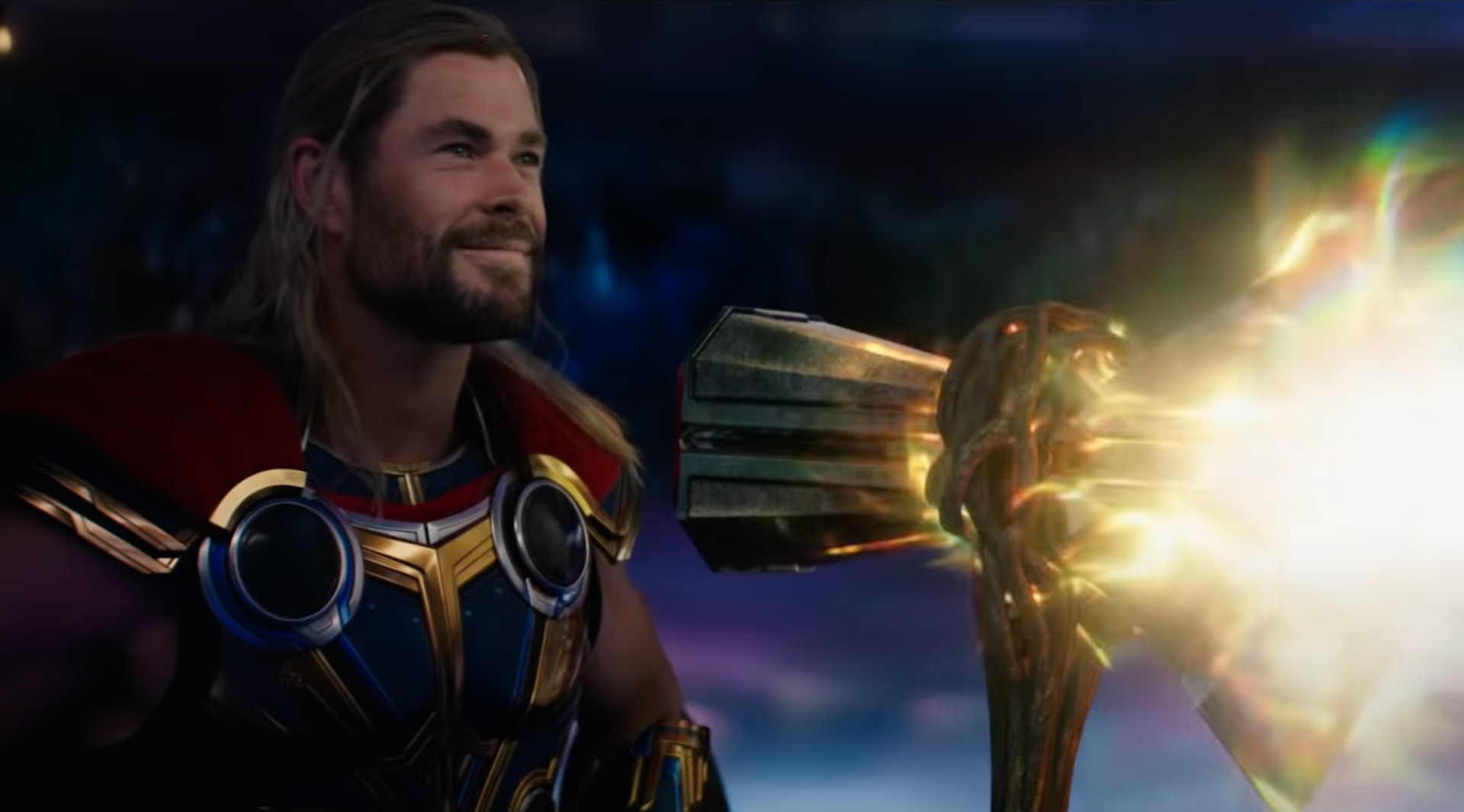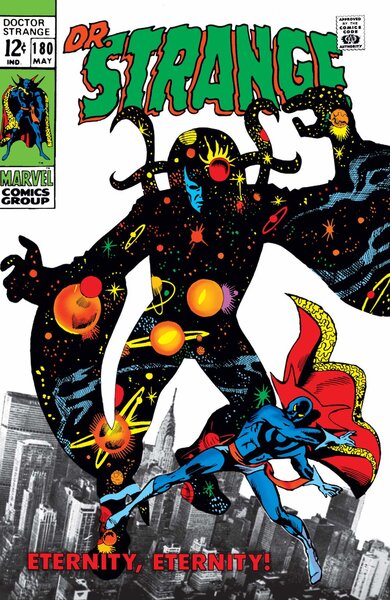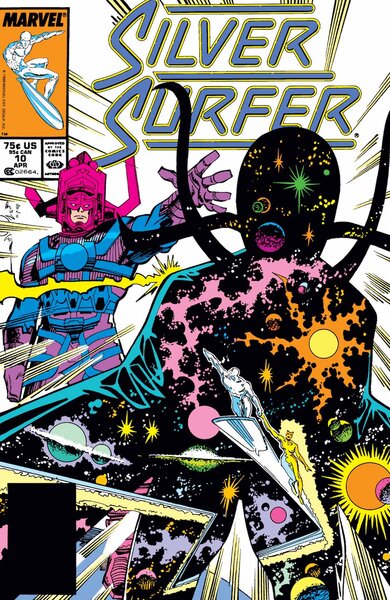Create a free profile to get unlimited access to exclusive videos, sweepstakes, and more!
Who is Eternity in 'Thor: Love and Thunder'? The cosmic entity, explained
Let's take a look at the comics history of this mysterious — and powerful — Marvel entity.

Part of the fun of the Marvel Cinematic Universe, particularly for longtime comics readers, is hearing unexpected, often obscure names being thrown into the mythology of the films. Sure, we expect to hear names like "Spider-Man" and "Wolverine" in our comic book movies, but when the films and TV series start dropping things like "Ego the Living Planet" and "Blackagar Boltagon" on us, it becomes clear just how deep into the Marvel Comics mythology we've gotten at this point.
Of course, just because these characters are finally deployed on the big screen doesn't mean they're always completely recognizable when compared to their comics counterparts. The MCU has always been a place where much of the flavor of the Marvel Universe is preserved, but the actual driving force behind plots and characters is often very different. We saw it with Thanos and his motivation to get the Infinity Gauntlet, with The Vulture's movie origin story, and we're still seeing it with the rise of characters like Ms. Marvel. With Thor: Love and Thunder, the MCU introduced yet another interesting twist on a Marvel Comics mainstay with a deep cosmic history, so let's take a look at this mysterious figure and explore just who, and what, it is in comics and beyond.
**Spoilers for Thor: Love and Thunder ahead.**
Just as he did in the comics, Gorr (Christian Bale) stormed into the MCU on a mission to kill all gods with the help of his trusty weapon, All-Black the Necrosword. Unlike the comics, though, MCU Gorr was looking for a shortcut to wiping the gods out in the form of a visit to a figure known as Eternity. According to MCU lore, if Gorr could gain access to Eternity — a being located at the center of the universe — he could ask it to grant one wish. So naturally, he would wish for all gods to die, Eternity would have no choice but to grant the wish, and Gorr's mission would be accomplished. With the help of Thor's magical axe Stormbreaker, Gorr was able to open the door to Eternity and present himself before the entity, but at the last moment, with Thor's encouragement, he wished not for all the gods to die, but for his lost daughter (India Rose Hemsworth) to be restored to life. At the end of the film, Gorr dies as a result of the Necrosword's dark magic, leaving his daughter, now nicknamed Love, to be raised by Thor. All thanks to Eternity.
Comics readers who've spent a lot of time in the Marvel Universe probably recognized Eternity's silhouette, with its starfield body, pretty much the instant it appeared onscreen. What they may have recognized a bit less, though, is Eternity's role in the MCU, since it's quite a bit of a departure from its comics book origins and appearances. Created by Stan Lee and Steve Ditko for the earliest Doctor Strange adventures in Strange Tales, Eternity has been part of the Marvel Comics universe since 1965, and as its lore has expanded, it's become clear that it's more than just a part of that universe.
See, according to Marvel lore, Eternity is the Marvel Universe. It's an entity whose substance is made up of every living thing and every time and place in the Marvel 616 universe, and its physical form is simply an avatar it can manifest in order to interact with lesser beings, like Doctor Strange. On the cosmic scale of power in Marvel Comics, it's more powerful and important than just about anything in the universe, with the possible exception being the Living Tribunal (who is basically Eternity, but for the multiverse rather than the universe), and with each new incarnation of the universe, Eternity forms a new incarnation of its own existence (in the world of Marvel Comics, the current 616 universe is the eighth iteration of said universe). Put simply, Eternity is a very big deal.
So, how does all of that link up with the wish-granting version of the character we saw in Love and Thunder? The short answer is, perhaps, that it doesn't. Maybe in the MCU, Eternity is just an entirely different thing, but there's actually a better explanation built right into comics lore. The comic book Eternity is the physical representation of the 616 universe, but every other universe also has its own Eternity. They can even merge together to form a massive, multiversal physical form, like a metaphyiscal Voltron. So, it's possible that the MCU version of Eternity is both the physical representation of that universe and a being that, for whatever reason, chooses to grant wishes to the people who manage to reach its avatar.
Are there other wrinkles to this? Absolutely, because we're talking about 50 years of comics history here. There's also the concept of the Eternity Mask, a black mask made from a piece of Eternity's body that grants its wearer powers and strength equal to that of pretty much any opponent. Then there's the question of the MCU character of Love, a hero who came away from her revival via Eternity with a still undefined list of superpowers. Is Love now an aspect of Eternity — perhaps a pocket universe unto herself, like the Marvel hero Singularity? — or is she just gifted as a byproduct of cosmic rebirth? The short answer is that Eternity's place in the MCU is simply too vague for us to know for sure, but given the character's long history and seemingly limitless power set, there are all sorts of places to take the big screen version next.
Thor: Love and Thunder is now in theaters.




























